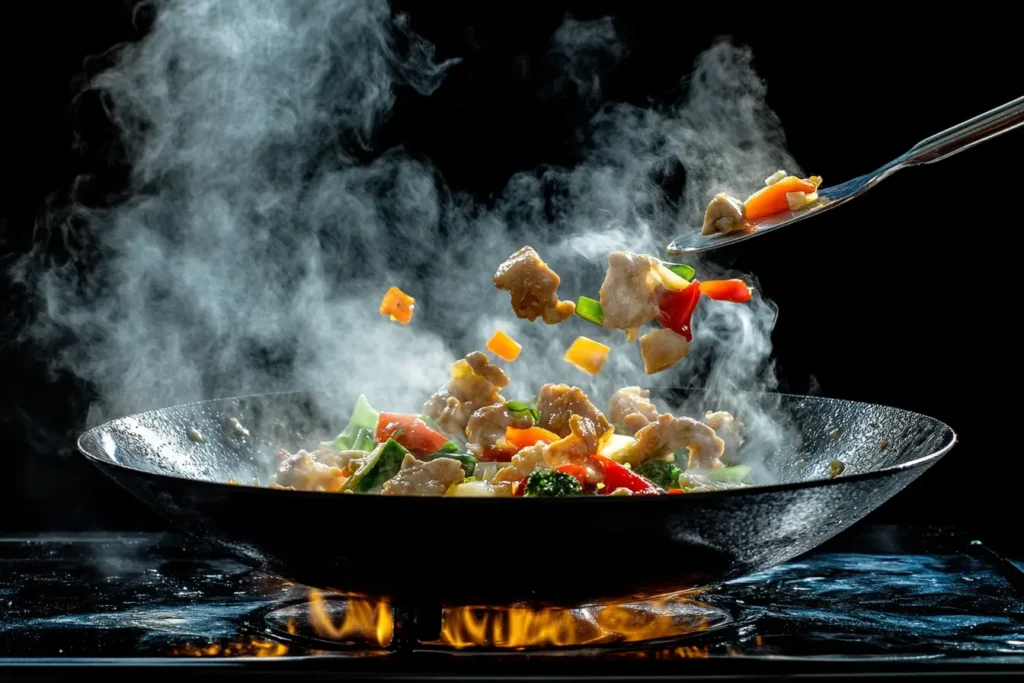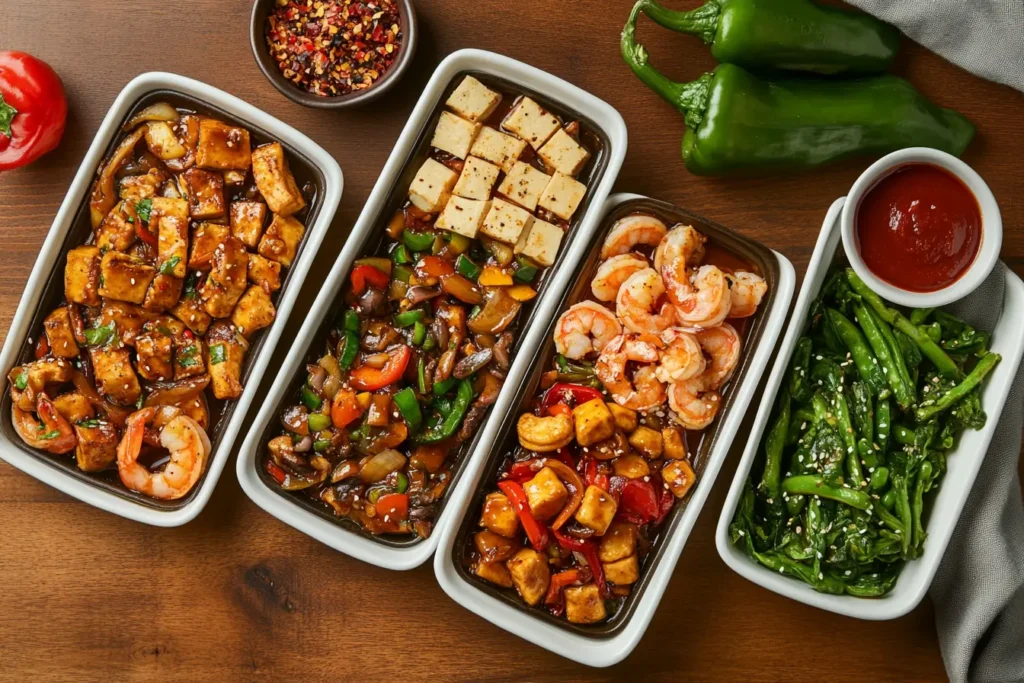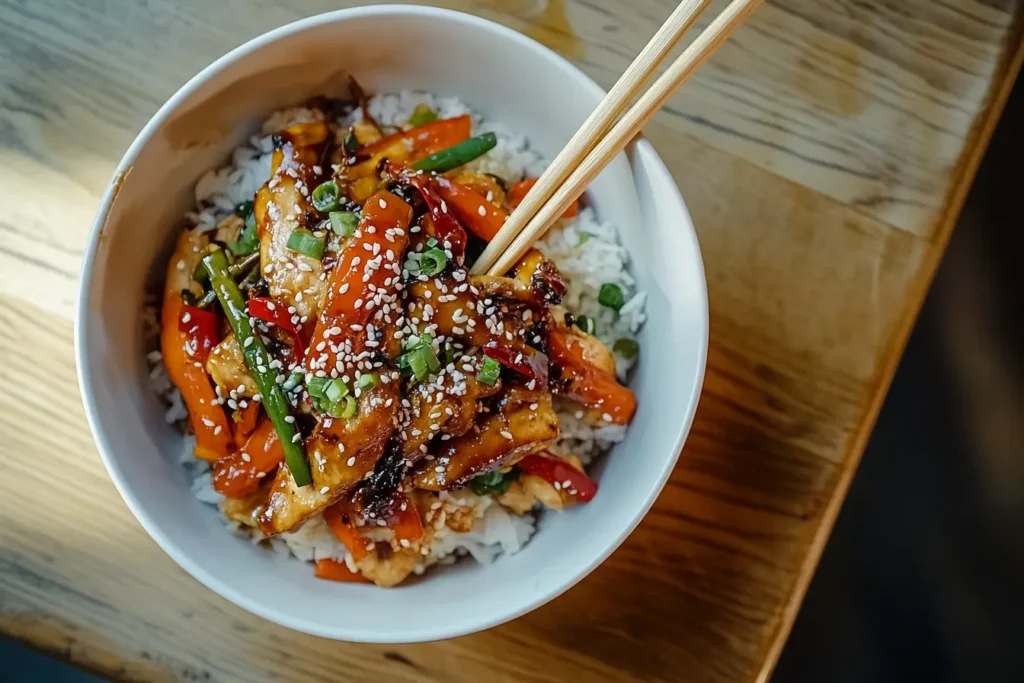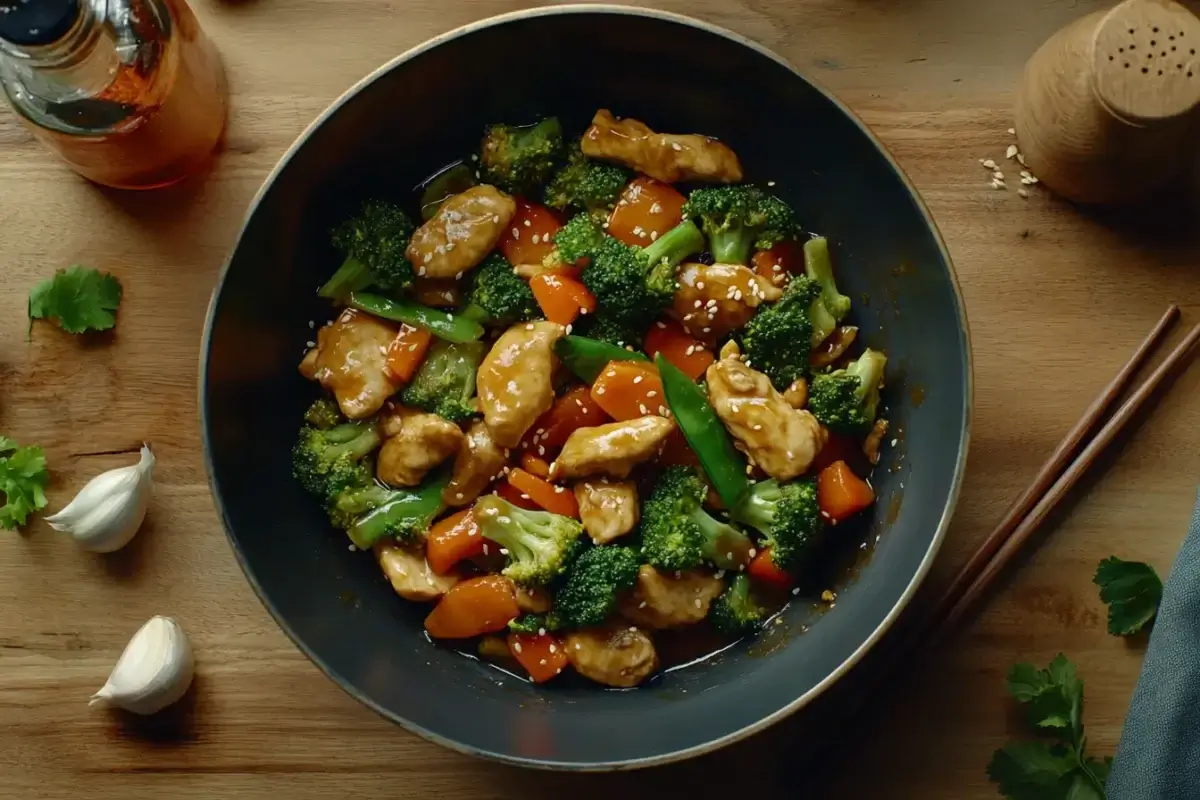Introduction
Imagine coming home after a long day, craving something delicious but without the hassle of a complicated meal. That’s where stir fry recipes step in—a weeknight hero that’s quick, flavorful, and endlessly versatile. With just one pan and a handful of ingredients, you can whip up a meal that feels like a treat but takes almost no time at all.
Whether you’re juggling work, family, or just trying to fit cooking into your packed schedule, stir fry dishes are the perfect solution. They’re fast, packed with nutrients, and customizable to whatever you have on hand. Got a mix of vegetables that need using up? Toss them in! Need a protein-packed dinner? Chicken, beef, shrimp, or tofu work beautifully. Let’s dive into the magic of stir fry recipes and discover how they can transform your weeknight cooking routine.
Table of Contents
Why You’ll Love Stir Fry Recipes
Stir fry dishes are the ultimate combination of speed and satisfaction. Here’s why you’ll want to keep them in your weekly meal rotation:
1. Quick and Easy
Most stir fry recipes can go from prep to plate in under 30 minutes. That’s less time than waiting for takeout to arrive!
2. Healthy and Nutritious
Packed with fresh vegetables and lean proteins, stir fry meals are a great way to hit your daily nutrition goals without sacrificing taste.
3. Customizable
Whether you prefer it spicy, savory, or sweet, stir fry recipes can be adjusted to match your taste buds.
4. Minimal Cleanup
One-pan cooking means fewer dishes to wash. For busy weeknights, this is a lifesaver!
5. Family-Friendly
Kids, picky eaters, and adults alike love the colorful and flavorful combinations that stir fry dishes offer.
Essential Ingredients for a Perfect Stir Fry
To create a delicious stir fry, it’s essential to focus on fresh and balanced ingredients. Here’s what you need:

1. Proteins
Your choice of protein sets the tone for the dish:
- Chicken: A versatile, lean option that cooks quickly.
- Beef: Thinly sliced cuts like flank steak or sirloin work best.
- Shrimp: Adds a touch of elegance and cooks in just minutes.
- Tofu: A plant-based option that absorbs flavors beautifully.
- Eggs: Perfect for a simple fried rice stir fry.
Tip: Marinate your protein beforehand for added flavor and tenderness.
2. Vegetables
- Broccoli, carrots, bell peppers, and snap peas are classic choices.
- Mushrooms, zucchini, and onions add depth and texture.
- Seasonal vegetables like asparagus or green beans keep it fresh.
Substitution Tip: Frozen vegetables work in a pinch but opt for fresh whenever possible for the best texture.
3. Sauces
The sauce ties everything together with bold flavors. Common ingredients include:
- Soy sauce or tamari for saltiness.
- Garlic and ginger for an aromatic base.
- Honey or brown sugar for sweetness.
- Chili paste or red pepper flakes for heat.
Make It Your Own: Experiment with flavors by adding hoisin, oyster sauce, or sesame oil.
4. Carbs
Pair your stir fry with:
- Steamed rice (white or brown).
- Noodles like soba, udon, or ramen.
- Low-carb options like cauliflower rice or zucchini noodles.
For more inspiration, check out this best chicken with peanut butter recipe for a unique protein twist in your stir-fry.
Tools You’ll Need for Stir Fry Cooking
While stir fry recipes are simple, having the right tools can make all the difference.
1. Wok or Deep Skillet
A wok is ideal for stir-frying because its shape allows for even cooking at high heat. If you don’t have a wok, a deep skillet works just as well.
2. Sharp Knife and Cutting Board
Stir fry cooking is fast-paced, so precision cutting is key. A sharp knife ensures evenly sliced proteins and vegetables.
3. Spatula or Tongs
These tools help you toss ingredients efficiently without spilling.
Pro Tip: Have all your ingredients prepped and within reach before you start cooking. Stir fry is quick, and there’s no time to pause mid-way!
Step-by-Step Stir Fry Cooking Instructions

1. Prep Your Ingredients
- Proteins: Slice thinly for quick cooking.
- Vegetables: Cut evenly to ensure everything cooks at the same rate.
- Sauce: Whisk together your sauce ingredients in a small bowl.
2. Cook the Protein
Heat a tablespoon of oil in your wok over medium-high heat. Add the protein and cook until browned. Remove and set aside.
3. Cook the Vegetables
In the same pan, add a bit more oil. Toss in your vegetables and stir frequently. Cook until they’re crisp-tender, about 3–5 minutes.
4. Add Aromatics
Add minced garlic and ginger to the pan, stirring for about 30 seconds until fragrant.
5. Combine Everything
Return the protein to the pan and pour in your sauce. Stir well and bring to a simmer, allowing the sauce to thicken slightly.
6. Serve
Dish up your stir fry over rice or noodles and enjoy while it’s hot!
If you’re looking for more ideas to elevate your technique, explore how to cook chicken without oil or butter for a lighter touch.
Tips for Making the Best Stir Fry

- Use High Heat: This ensures the ingredients cook quickly without losing their crunch.
- Avoid Overcrowding: Too many ingredients at once can cause steaming instead of frying.
- Taste and Adjust: Don’t be afraid to tweak the sauce to your liking.
- Prep Ahead: Having everything chopped and ready to go is key to a smooth cooking process.*
Need a side dish idea? Consider pairing your stir-fry with Southeast Asia-inspired brown rice with vegetables.
Customization Ideas for Your Stir Fry
Stir fry recipes are incredibly adaptable. Here are some ideas to make them your own:

Vegetarian and Vegan Options
- Swap meat for tofu, tempeh, or edamame.
- Use vegetable broth and tamari for a fully plant-based dish.
Gluten-Free Adjustments
- Replace soy sauce with gluten-free tamari or coconut aminos.
Low-Carb Variations
- Serve with cauliflower rice or spiralized zucchini.
Spice It Up
- Add fresh chili slices, sriracha, or a splash of hot sauce for a fiery kick.
For a hearty vegetarian option, check out this recipe for vegan soup dumplings, which pairs well with lighter stir-fry dishes.
Serving Suggestions

Pair your stir fry with:
- Rice: Steamed jasmine or brown rice is a classic base.
- Noodles: Soba, lo mein, or even spaghetti for a fusion twist.
- Sides: Spring rolls, dumplings, or miso soup complete the meal.
Meal Prep and Leftover Tips
Stir fry is an excellent choice for meal prep. Here’s how to make it last:
- Storage: Keep leftovers in an airtight container in the fridge for up to 3 days.
- Reheating: Warm in a skillet over medium heat to preserve the texture.
- Freezing: Freeze stir fry without rice or noodles for up to 2 months.
For more on incorporating stir-fry into your weekly meal plan, explore these frozen green bean recipes that complement stir-fry perfectly.
Frequently Asked Questions (FAQs)
What is the secret to good stir-fry?
The secret to a good stir-fry lies in preparation and technique:
- High Heat: Use high heat to cook ingredients quickly and preserve their flavor and texture.
- Prep Everything First: Chop all ingredients and mix the sauce before starting; stir-frying moves fast.
- Use Fresh Ingredients: Fresh vegetables and proteins yield the best taste and texture.
- Balance the Sauce: Combine salty, sweet, savory, and spicy elements for a flavorful dish.
- Avoid Overcrowding: Cook in small batches to prevent steaming and ensure a crisp finish.
What are the 3 rules of stir-frying
- Prep Before You Cook: Have everything chopped, measured, and ready before turning on the stove.
- Use High Heat: This ensures that the ingredients cook quickly without becoming soggy.
- Cook in the Right Order: Start with proteins, then add harder vegetables like carrots, and finish with soft veggies like bell peppers or leafy greens.
What is the secret ingredient in stir-fry?
The secret ingredient in a great stir-fry is umami flavor, which is often achieved through:
- Soy Sauce: Adds saltiness and depth.
- Oyster Sauce: Provides richness and umami.
- Ginger and Garlic: Infuse the dish with fresh, aromatic flavors.
- Toasted Sesame Oil: Adds a nutty, authentic touch but should be used sparingly.
For extra zing, add a splash of rice vinegar or lime juice at the end to brighten the flavors.
What are the seven common ingredients in a stir-fry?
- Protein: Chicken, beef, shrimp, tofu, or eggs.
- Vegetables: Broccoli, carrots, bell peppers, snap peas, mushrooms, onions, or zucchini.
- Garlic: Adds aromatic flavor.
- Ginger: Brings freshness and depth.
- Soy Sauce: A base for most stir-fry sauces.
- Oil: High-smoke-point oils like peanut, canola, or avocado oil for cooking.
- Optional Sauce Enhancers: Honey, oyster sauce, chili paste, or rice vinegar for added flavor.
These ingredients form the foundation for a flavorful, balanced stir-fry that can be customized to suit your taste!
Conclusion
Stir fry recipes are a lifesaver for busy weeknights, combining speed, flavor, and versatility into one pan. From vibrant veggies to juicy proteins and perfectly balanced sauces, there’s a stir fry for every taste and occasion. Now’s the time to grab your wok, gather your favorite ingredients, and start creating meals that bring joy to your table.
Please don’t forget to leave a review.
For more meal ideas, visit our guide on mini pancakes to pair with stir-fry for a sweet-savory combo.

